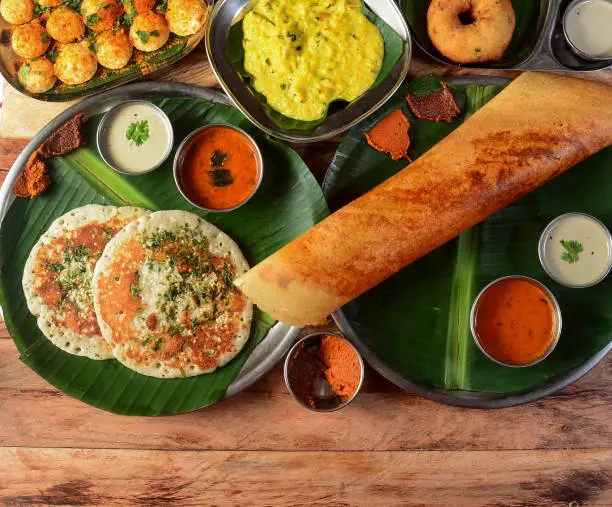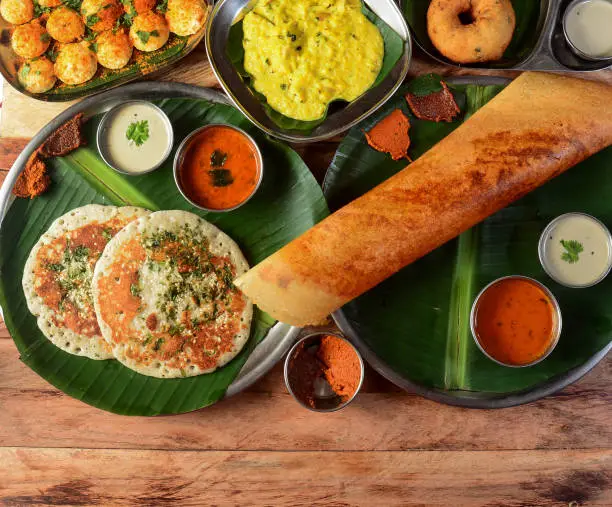Tamil cuisine is an essential part of India’s rich culinary landscape, offering a diverse range of flavors, textures, and ingredients that reflect the region’s history, geography, and cultural practices. Known for its bold use of spices, intricate cooking techniques, and emphasis on fresh, local ingredients, Tamil food stands out as one of the most unique and celebrated culinary traditions in the world.

Here are a few key aspects that contribute to the greatness of Tamil cuisine:
1. Deep-rooted Cultural Significance
Tamil food is not just about taste; it is deeply connected to the culture and rituals of Tamil people. From the elaborate feasts during festivals like Pongal, Diwali, and Navaratri to the simple daily meals served in homes, food plays an important role in Tamil life. It’s about sharing, celebrating, and honoring traditions through food.
2. Complex and Layered Flavors
Tamil cuisine is known for its perfect balance of flavors: spicy, tangy, sweet, bitter, and salty. The complexity of Tamil dishes comes from the careful blending of various spices and ingredients. For instance, sambar, a signature Tamil dish, combines lentils, tamarind, vegetables, and an array of spices to create a deeply flavorful and satisfying experience.
3. Spices and Aromatics
Tamil cuisine uses an impressive array of spices that define its distinctive flavor profile. Commonly used spices include mustard seeds, fenugreeks, curry leaves, asafetida, cumin, and black pepper, among others. These spices are not only used for flavor but are also considered for their medicinal and digestive benefits, making Tamil food both nutritious and flavorful.
4. Variety and Versatility
Tamil food is incredibly diverse, offering a wide range of vegetarian and non-vegetarian dishes. Whether it’s comforting sambar rice, a crispy dosai, or a rich and flavorful chettinad chicken curry, the cuisine offers something for everyone. The versatility of Tamil food also extends to how it’s served—whether as part of an elaborate multi-course feast or as a simple, one-pot meal.
5. Use of Fresh and Local Ingredients
The greatness of Tamil cuisine also lies in its emphasis on fresh, seasonal, and local ingredients. From the fields of coconut, tamarind, and banana leaves to fresh vegetables and fish, the ingredients used in Tamil cooking are rooted in the natural bounty of the region. The availability of these ingredients ensures that Tamil dishes are always fresh, vibrant, and full of flavor.
6. Rice-Centric Cuisine
Rice is the backbone of Tamil cuisine, with various types of rice-based dishes like idli, dosa, pongal, sambar rice, and curry rice playing a central role. The versatility of rice allows it to be used in different forms—fermented, steamed, fried, or boiled—and paired with a variety of gravies and chutneys.
7. The Art of Fermentation
Fermentation is a key technique in Tamil cooking, used to make items like idli, dosa, appam, and vada. This process not only enhances the nutritional value of foods but also adds to their taste and texture. The delicate fermentation of rice and urad daal creates light, airy, and slightly tangy dishes that are beloved across Tamil Nadu.
8. Chettinad Cuisine: A Culinary Jewel
Chettinad cuisine, one of the most celebrated regional variations of Tamil food, is renowned for its bold, spicy flavors. Hailing from the Chettinad region of Tamil Nadu, this cuisine makes extensive use of roasted spices and fresh ground masalas to create complex and aromatic curries and rice dishes. Chettinad chicken curry, kuzhambu, and chettinad mutton are some iconic dishes that showcase the richness of this culinary tradition.
9. Sustainability and Minimal Waste
Tamil cuisine places great emphasis on utilizing all parts of ingredients, minimizing waste, and making use of leftover food. For example, leftover rice is often used to make curd rice or lemon rice, while vegetable peels might be turned into soups or curries. The use of banana leaves for serving food not only adds an aesthetic touch but is also eco-friendly.
10. Food as a Spiritual and Healing Experience
In Tamil culture, food is often considered a source of nourishment for the body and soul. Many dishes are believed to have medicinal properties, especially when paired with the right spices. For example, pepper and ginger are often used to aid digestion, while turmeric is praised for its anti-inflammatory benefits. Additionally, the ritual of preparing and sharing meals, especially during religious ceremonies and festivals, is seen as an act of devotion and respect.
Top 10 iconic foods in tamil cuisine
Tamil Nadu offers a wide variety of iconic foods that represent the heart and soul of South Indian cooking. Here are 10 must-try dishes that define the greatness of Tamil cuisine:
1. Dosa
- Description: A crispy, thin, and savory crepe made from fermented rice and urad dal batter. It’s usually served with sambar (a lentil-based vegetable stew) and an assortment of chutneys (coconut, tomato, and mint). Variations include masala dosa (filled with spiced potatoes) and rava dosa (made with semolina).
2. Sambar
- Description: A classic South Indian stew made with lentils, vegetables, tamarind, and a special mix of spices. Sambar is often served as an accompaniment to rice, idli, dosa, and vada. The tangy, spicy flavors make it a staple in Tamil households.
3. Idli
- Description: Soft, fluffy steamed rice cakes made from fermented rice and urad dal batter. Idlis are traditionally served with sambar and chutney and are a favorite breakfast food across Tamil Nadu.
4. Chettinad Chicken Curry
- Description: A rich, spicy, and aromatic curry hailing from the Chettinad region, made with freshly ground spices, coconut, and a variety of meats. This dish is known for its intense heat and deep flavor, with a complex blend of spices like cinnamon, cloves, and star anise.
5. Pongal
- Description: A comfort food, typically served during the harvest festival of Pongal, this dish is made with rice and moong dal cooked together with black pepper, cumin, ghee, and cashews. There are two popular variations: ven pongal (savory) and sakkarai pongal (sweet), the latter made with jaggery and flavored with cardamom.
6. Parotta
- Description: A flaky, layered flatbread made from wheat flour and served with a variety of accompaniments, such as spicy curries, korma, or chettinad chicken. It’s a popular street food and is typically enjoyed with mutton or vegetable curry.
7. Kuzhambu
- Description: A tangy, spiced curry made from tamarind and a variety of vegetables or meats. Kuzhambu is a key feature in Tamil cuisine and comes in different varieties, such as puli kuzhambu (with tamarind), vendakai kuzhambu (with okra), and mutton kuzhambu (with meat). It’s often served with rice.
8. Vada
- Description: Crispy, deep-fried fritters made from soaked lentils, usually urad dal, and shaped into doughnuts. Vadas are often served as a side dish with sambar and chutney, especially during breakfast or festivals. Medu vada is a popular variety.
9. Chettinad Fish Curry
- Description: A vibrant, fiery fish curry from the Chettinad region, made with fresh fish, ground spices, tamarind, and coconut. Known for its robust flavors and rich texture, this dish pairs wonderfully with rice or idiyappam (string hoppers).
10. Curd Rice (Thayir Sadam)
- Description: A simple yet comforting dish made by mixing cooled rice with yogurt and garnished with mustard seeds, curry leaves, and green chilies. It’s often enjoyed with a side of pickle and serves as the perfect cooling dish after spicy meals.
